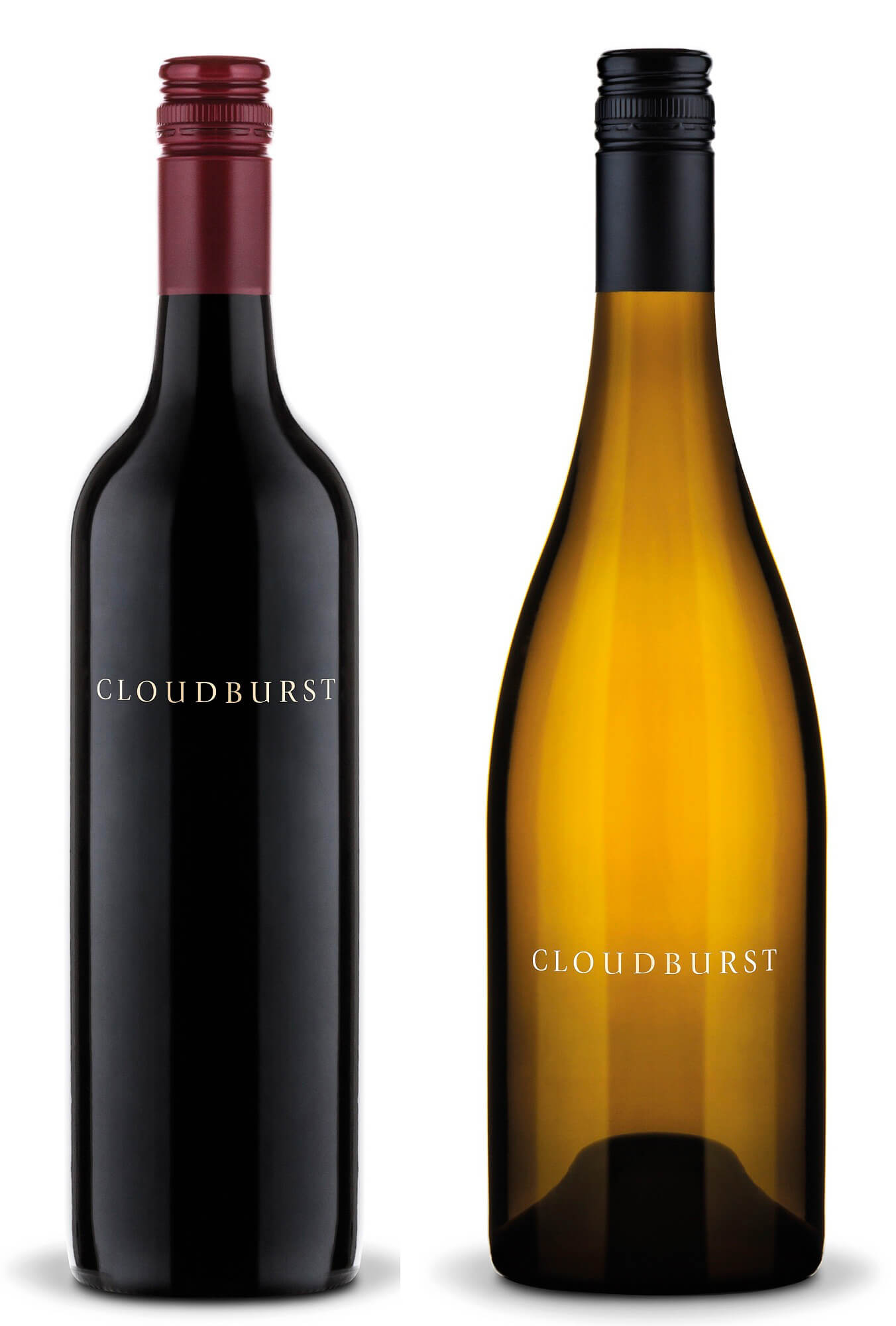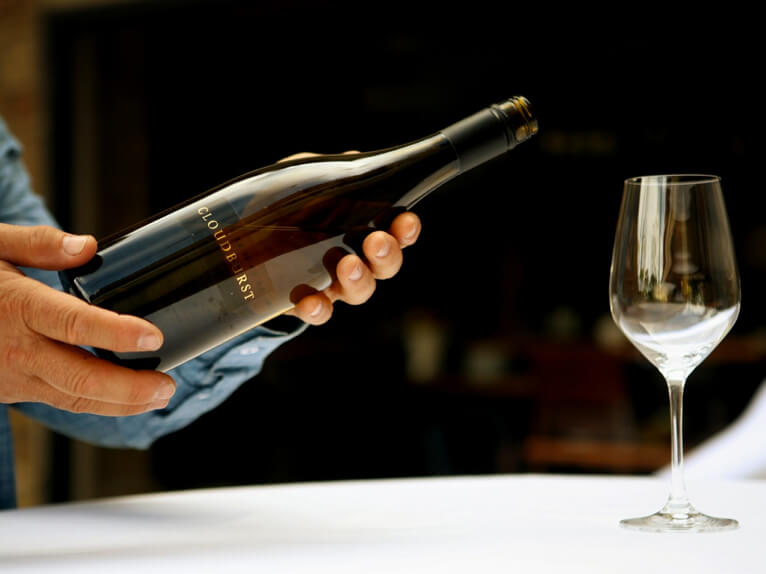Cloudburst: The Ultimate Unicorn Wine
by Ken Gargett
Wine lovers all enjoy the chance to drink a unicorn wine, and bottles from Cloudburst are nothing if not that. Until recently, I’d never seen a single bottle, though I’d heard a number of tales.
When mentioned to friends, it was pretty much the same story. With a twist.
Cloudburst is a winery that seems to attract more than its fair share of rumors, though quite why or from where they hail, I have no idea. What is obvious is that this place offers a very small production of select, extremely high quality, and seriously expensive wines.
The Cloudburst winery was also supposedly difficult to visit and rather dismissive of others in the region; the rumors did not paint the friendliest of pictures. For a winery to go from dirt to cult in a decade, though, demands investigation, especially when its first wines were wallowing in trophies before they’d even been released.
By chance I found myself next to Cloudburst’s founder and owner, Will Berliner, at the most recent Cape Mentelle International Cabernet Sauvignon Tasting in Margaret River and I’m happy to report that the rumors could not have been further from the mark.
Cloudburst: a newcomer plunging headfirst
Fair to say that, given there was not a vine in the ground nor any intention to plant one a little over a decade ago, Cloudburst does walk to the beat of a different drum, making three wines, all single varieties: Cabernet Sauvignon and Chardonnay, the mainstays of the region, and an outlier, Malbec.

Cloudburst Wines
Berliner, an American biologist who owned outdoor clothing stores, and his wife, Alison Jobson, had spent a number of years searching Australia for the ideal place to live. Wine did not come into it. They knew the minute they arrived in Margaret River that they had found their future home (it is a beautiful region), but even then wine was something others did.
They purchased their land in 2004. As Berliner says, “We found what we feel is the most beautiful site in the world and we simply wanted to live here.” Wine and grape growing “came later and wasn’t remotely in my cards when we first came through.” The sea change came quickly and when it did, as Berliner says, “Little did I know how engrossing it would be, nor how much it would require of me, nor how thoroughly it would take over my life!”
When the decision was made to plunge headfirst into wine in this distant region in 2005 (it didn’t take long) and plant vines, from the very beginning Berliner adopted biodynamic principles, though has not sought certification. The vineyard was tiny, though close-planted – a mere half a hectare in total – with 0.2 hectares planted to Cabernet Sauvignon, 0.2 hectares to Chardonnay, and a mere 0.1 hectares to Malbec.
Those quantities have all doubled by now in proportion to the original plantings. Cabernet cuttings came from Cullen’s and Moss Wood. To support the soil, Berliner uses homeopathic preparations, fish and seaweed emulsions, biodynamic composts, rock dusts, mulches, and cover crops.
All vines are on their own roots and dry-grown. For Berliner, close-planting “brings out the inherent flavor of the land.”
Winemaking is on the basis of minimal intervention with the use of wild ferments. Each decision is carefully considered. For example, rather than the recommended arsenic-treated pine posts for trellising, Will turned to the local Wandoo timber for its natural termite-proof qualities.
Cloudburst is situated in the “unofficial” sub-region of Wilyabrup. With other famous local names like Cullen, Moss Wood, Fraser Gallop, Pierro, and Oatley as neighbors, Cloudburst is truly in the dress circle of the region. Woodlands was involved with the winemaking in the early days, but as Cloudburst grew Berliner took on the role himself and has done so onsite for the last three vintages.
The wines are obviously very limited in production but will be found in specialist retailers and restaurants in both Australia and the United States, and I know Berliner would like to expand further.
One aspect of these wines that can’t be avoided is price. These are, with the exception of the occasional tiny production special release such as Cullen’s Vanya, the region’s most expensive wines. They sit between AUD$250 and AUD$370, depending on wine and vintage.
Are they value? As usual, a question for the individual, though it would be fair to say that the region offers wines of equally superb quality at lower prices and easier accessibility. These prices have the wines at the equivalent of high Premier/low Grand Cru prices for the Chardonnay (it sits at that level from a quality perspective) and Third and even Second Growth for the Cabernet Sauvignon (see wine classifications on Wikipedia for more on what this means).

Cloudburst Cabernet Sauvignon
As for the Malbec, there are a couple from Argentina that bear a price tag of that heft, but no others from Australia. All that said, no wine lover should miss the chance to try these wines if it occurs.
It’s worth adding that the bottles are exquisitely presented and each one numbered, with total production noted.
Cloudburst: the most exceptional wine possible?
Berliner sums up his philosophy and attitude as follows: “My aim from the start was to make the most exceptional wine possible. It was never about scale, nor about money, and so Cloudburst is driven by very different considerations than my neighbors’. Cloudburst is cultivated differently from any other vineyard in the world, entirely by hand, including meticulous hand-weeding and -mulching. No one anywhere does what we do. I know of no one who goes to the extent we do in caring for this place.”
It is not a bad way to think, but in the end it all comes down to what is in the bottle. As it always does.
The Cabernet quickly proved its worth, not just with the initial trophies, but in subsequent vintages. Rave reviews are the norm.
The 2015 was a star at the Cape Mentelle event mentioned above – an elegant combination of blackberry, mild chocolate, dry herbs, florals, and maduro tobacco leaf notes. A long and exciting future awaits. The 2014 is perhaps even more aromatic.
Moving forward, the 2016 (1,788 bottles made) has a wonderful combination of power and finesse and may be my favorite of all the Cloudburst reds I’ve tried. A hint of that Cabernet doughnut, followed by extensive length and very fine tannins. Should age superbly. Like most of these wines the alcohol level is kept well in check, providing ideal freshness.
It is a debate that will likely descend to personal preferences but, as much as I love the Cloudburst reds, the Chardonnay gets my vote as the really seriously special wine of the range. As mentioned, these are priced at high Premier/low Grand Cru levels and they certainly drink at that standard.
There would be a great many white Burgundies that fall well short in comparison. These are brilliant wines. Looking at them, one thing is certain: these are whites that benefit from decanting. Give them time in the glass. I returned to these wines the day following my initial tasting and, as good as they were then, they were even better with that extra time.
In all honesty, the 2017 is too young at the moment, though everything is in place. But the 2016?
The 2016 is utterly stellar. Bottle 168 of 2,288 was complex and seamless with real intensity. Has serious length. Noticeable use of oak, but a nearly perfect meld with the fruit. This is such a creamy Chardonnay. There is a rock melon note, but also a lovely smoky pear character. Great concentration and yet grace and elegance remain evident throughout. Glorious.
I gave it 96 when I first tried it, 97 the next day. Take your pick.
The Malbec is perhaps more confusing. Was it intended as a blending component and then the decision made to bottle it separately? Does Berliner simply love Malbec?
A slightly curious choice, but one that makes perfect sense to him when asked, “When I arrived in the region and tasted through, I examined the various Merlots and Cabernet-Merlot blends, and it was clear that the type of eloquent, powerful expression I’d experienced from France and the U.S. was not present here. Whether that was due to clone or viticulture, I wasn’t sure, but I decided right then to avoid Merlot here. Cabernet Sauvignon likes a foil, and so I considered Petit Verdot, Cabernet Franc, and Malbec. For a number of reasons I chose Malbec, and it turns out that on my site, raised the way I’ve raised it, it expresses in a remarkable way with finesse and powdery tannins and a regal wildness that intoxicates my soul. Lucky choice.”
Has it worked? Well, for me, yes and no. Yes in that it is probably the finest Malbec made in this country and one that can compete with the top Argentinian efforts. No in that it remains unconvincing as a grape of the highest quality. For me, it does not rank with Cabernet, Pinot Noir, Shiraz, Nebbiolo and a few others.
But a very fine effort, nonetheless. The 2015 (I tasted bottle 272 of 498) is perhaps the pick of recent vintages. An almost impenetrable wine with dark berries, leather, and black olives. Well-structured and good length, but the grape is not one that easily lends itself to finesse and elegance.
Cloudburst is a fabulous and fascinating addition to the pantheon of great Margaret River wineries.
For more information, please visit www.cloudburstwine.com.
You may also enjoy:
The World’s Best Wine? No Contest: Romanée-Conti By Domaine De La Romanée-Conti
Penfolds G3: Making Grange, Already One Of The World’s Greatest Wines, Even Better
Penfolds Special Bottlings: Spirited Wines, Distilled Single Batch Brandy, And A Fortified





















































Leave a Reply
Want to join the discussion?Feel free to contribute!